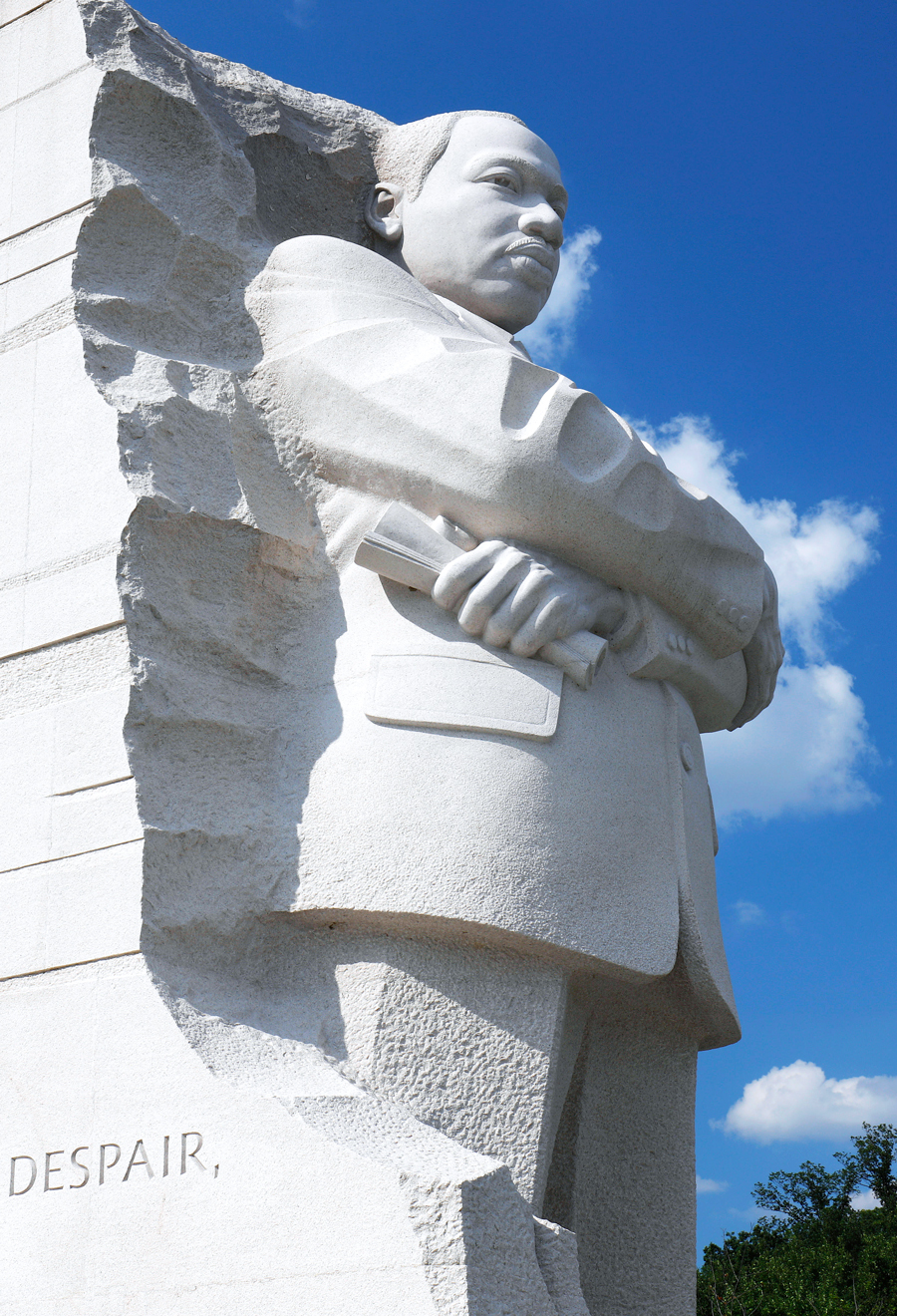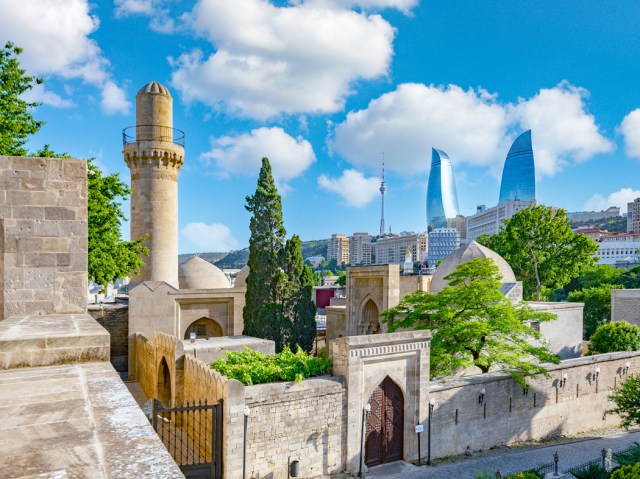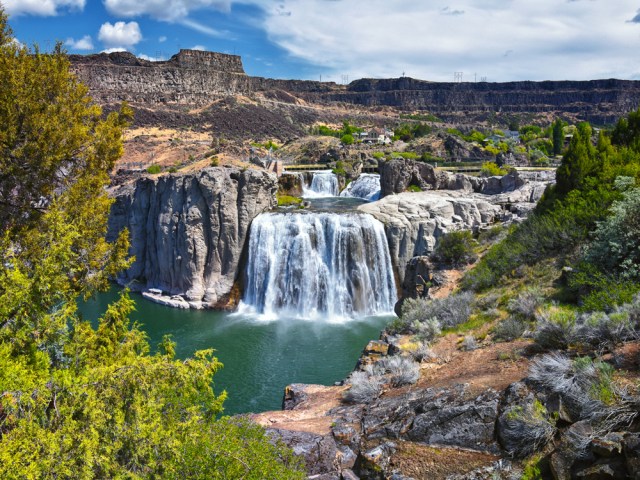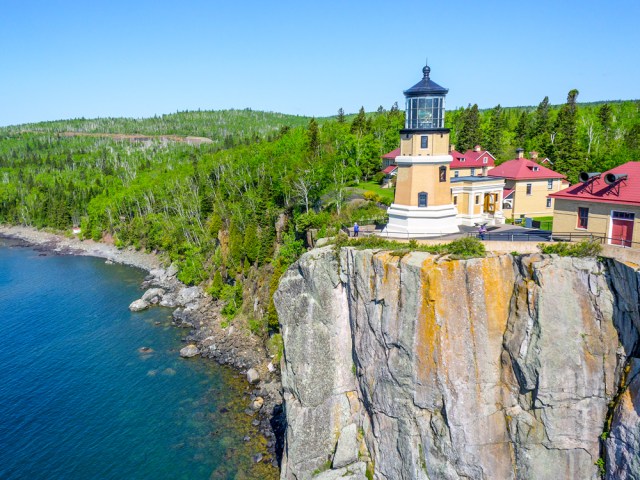The United States is home to thousands of sites that commemorate influential historical figures, military heroes, civil rights leaders, and significant turning points in the nation’s history. Visiting these landmarks is all but guaranteed to leave you with a sense of awe and a deeper appreciation for the trailblazing Americans who shaped our country. Here are seven of the more important memorial sites you should visit.
Crazy Horse Memorial – Black Hills, South Dakota
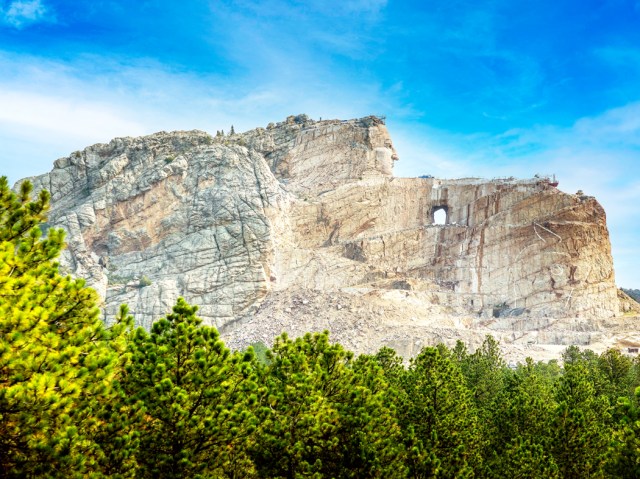
The Crazy Horse Memorial in the Black Hills of South Dakota is set to be the world’s largest sculpture — but only once it’s finished. More than 70 years after it began, work on the monument is still in progress, and some are skeptical that it will ever be completed. While construction started in 1948, the memorial’s history dates back to Mount Rushmore, which was built in 1927 on Lakota Native American lands. In response, Chief Henry Standing Bear petitioned Polish-American sculptor Korczak Ziolkowski (who assisted on Mount Rushmore) to carve a memorial dedicated to Crazy Horse, the Oglala Lakota chief who successfully fought Custer’s army at the 1876 Battle of Little Big Horn.
Crazy Horse’s face alone is 87 feet tall (compared to Rushmore’s 60-foot George Washington profile), while the entire memorial will stand at 563 feet — four times the height of the Statue of Liberty. Although Ziolkowski passed away in 1982, leaving his masterpiece unfinished, roughly 1 million visitors still make the journey each year to admire the single completed segment, a majestic profile of Crazy Horse carved into a rocky mountain face.
9/11 Memorial – New York, New York

In stark contrast to the skyscrapers and busy streets of downtown Manhattan, two reflecting pools sit quietly on the former site of the World Trade Center’s towers. The waters flow inward, first to a pool 30 feet below street level and then another 20 feet into a void that represents, in the architects’ words, “absence made visible.” Surrounding them are the names of the nearly 3,000 victims who lost their lives on September 11, 2001, as well as those who perished in the 1993 terrorist attack.
Designed by Michael Arad and Peter Walker, the pools are part of the 9/11 Memorial & Museum — a site which has drawn more than 50 million people since it opened in 2014. The 8-acre memorial complex also houses an incredible underground museum with 60,000-plus artifacts and interactive exhibits. Above ground are 400 swamp white oak trees, a species native to New York, Virginia, and Pennsylvania — the three plane crash sites. A single Callery pear tree, which was damaged during the attack, has been revived and is now known as the Survivor Tree and stands as an enduring symbol of resilience.
Vietnam Veterans Memorial – Washington, D.C.
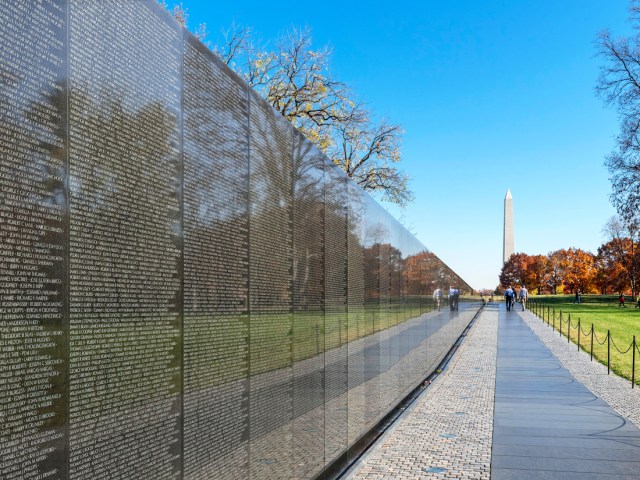
In 1980, a competition was held for the design of a new memorial to Vietnam veterans. The winning entry by Maya Lin, then a Yale University senior, was a graceful, stark work that elicits contemplation. The memorial features a V-shape gash carved into the sod of the National Mall and held open by black granite walls. The walls are etched with the 58,281 names of those who lost their lives in the Vietnam War, and from the vertex where they meet, the walls extend 246 feet in opposing directions, toward the Washington Monument and the Lincoln Memorial. In 1984, a more traditional sculpture — of three soldiers and a U.S. flag — was added to the site.
Nine years later, a Vietnam Women’s Memorial, a figurative sculpture depicting nurses tending to a fallen soldier, was erected nearby and, in 2004, a plaque honoring those who died after the war but as a result of their service was added to the solemn memorial group. And on Veterans Day 2020, the National Native American Veterans Memorial was unofficially unveiled. (It had an official post-pandemic dedication two years later.) Placed in a wooded wetland reestablished outside the Smithsonian’s National Museum of the American Indian, the memorial offers the chance for some quiet reflection on Washington, D.C.’s well-trodden National Mall.
Pearl Harbor National Memorial – Hawaii

On December 7, 1941, “a date which will live in infamy,” as FDR so memorably described it, Japanese forces attacked Oahu’s Pearl Harbor, the event that finally precipitated the United States’ long deliberated entry into World War II. Eighty years after the fact, the Pearl Harbor National Memorial stands as a sobering reminder of the unthinkable number of lives lost on that day — and remains one of the most visited attractions in the state of Hawaii.
The centerpiece of the experience is the USS Arizona Memorial, which sits alongside a still active military base and is accessible only by shuttle boat (for which you’ll need a ticket and designated departure time). The unique floating white concrete-and-steel structure, designed by Austrian architect Alfred Preis, is built atop the eponymous sunken battleship. Visitors can still see its remains from the surface, and its 1,177 deceased officers and crewmen are enshrined in marble at the site. Around the broader national memorial, you’ll find surprisingly serene natural spaces, artifacts from the damaged ships, and educational films about one of the most pivotal moments in American history.
Martin Luther King Jr. Memorial – Washington, D.C.

Before 2011, the National Mall didn’t have a memorial dedicated to any Black Americans, but that changed when Baptist minister-turned-civil rights activist Martin Luther King, Jr. was honored with this impressive 30-foot granite stone sculpture. (It’s also the first memorial on the mall not dedicated to a President or war.) Prominently located at the Tidal Basin opposite the Jefferson Memorial, King’s memorial is packed with symbolism — right down to its address at 1964 Independence Avenue SW, honoring the Civil Rights Act of 1964.
The winning design for the monument (out of 900-plus entries) took inspiration from one of King’s quotes: “With this faith, we will be able to hew out of a mountain of despair, a stone of hope.” Upon entering the memorial, visitors first pass through two halves of the Mountain of Despair before reaching the Stone of Hope, where King’s statue is located. Throughout the memorial, King’s words are inscribed into stone — a powerful reminder of the continuing struggle for civil rights around the globe.
National Memorial for Peace and Justice – Montgomery, Alabama
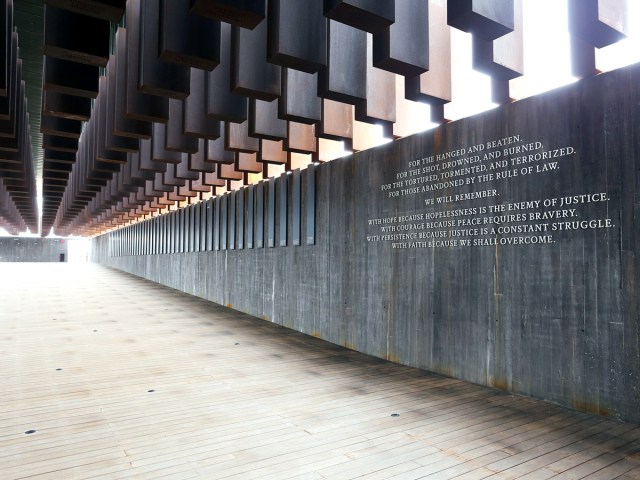
By design, memorials are sobering places, where reflection, silence, and intense emotional reactions come reflexively, without instruction. Opened in April 2018, the National Memorial for Peace and Justice in Montgomery is no exception — and one that was long overdue. Created by the Equal Justice Initiative in collaboration with artists such as Kwame Akoto-Bamfo, Dana King, and Hank Willis Thomas, the open-sided, single-story structure is, in the words of the EJI, the “nation’s first memorial dedicated to the legacy of enslaved Black people, people terrorized by lynching, African Americans humiliated by racial segregation and Jim Crow, and people of color burdened with contemporary presumptions of guilt and police violence.”
Inside, suspended from the ceiling is the focal point of the six-acre site: orderly rows of six-foot slabs of Corten steel, each of the 800 roughly human-sized slabs representing a U.S. county and is inscribed with the names of the thousands of men, women, and children who were violently murdered there. The memorial and the adjacent museum, a sobering reminder of the nation’s history of racial inequality, was created with $20 million in private funds, and has quickly become one of the top tourist destinations in Alabama.






